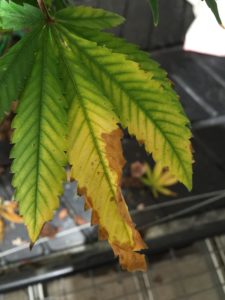Plants need four essential things to grow: light, water, carbon dioxide (from the air) and nutrients.
Each of these things work together to promote vigorous growth and increase yield.
The catalyst motivating everything is the amount of light a plant receives. Energy from light is captured by the plant and used to process the carbon, nutrients and water.
When plants receive more light, they need more of the other three elements. And when they receive less light, they need less of the other three elements as well.
Look Out For Hot Spots
While modern LEDs are pretty good at equally distributing light across the fixture, it is possible to get hot spots.
Especially with traditional lighting, like HIDs, plants directly under the bulb receive more light than those on the perimeter of the canopy.

In order to ensure healthy plant growth among all plants, it is crucial to direct more water and nutrients to the plants in the middle that are receiving more light – which is difficult to do on a large scale.
This is one reason some growers follow a maximum of 4-6 plants per light. With only 4-6 plants under each light, it is possible to have a section of each plant directly under the bulb, thus evening out the amount of light each plant receives.
More Light, More Nutrients
Additional light means that plants will need more nutrients to increase production.
Monitor your plants closely and take the appropriate steps to increase nutrient (and water and carbon dioxide) levels to an amount that will allow the plant to grow to its maximum potential based on the amount of light available.
The amount of light a plant receives is very closely related to the amount of nutrients it will need. An increase of 9% more light is very likely to lead to an increased nutrient need of roughly 9% as well. Keep this in mind as you plan your feeding schedule.
Healthy and efficient plants use everything they are given, and are given enough to max out their needs. Fixture types, locations, spectrums, mounting heights, and schedules are all things you should consider when creating your grow room lighting design.

